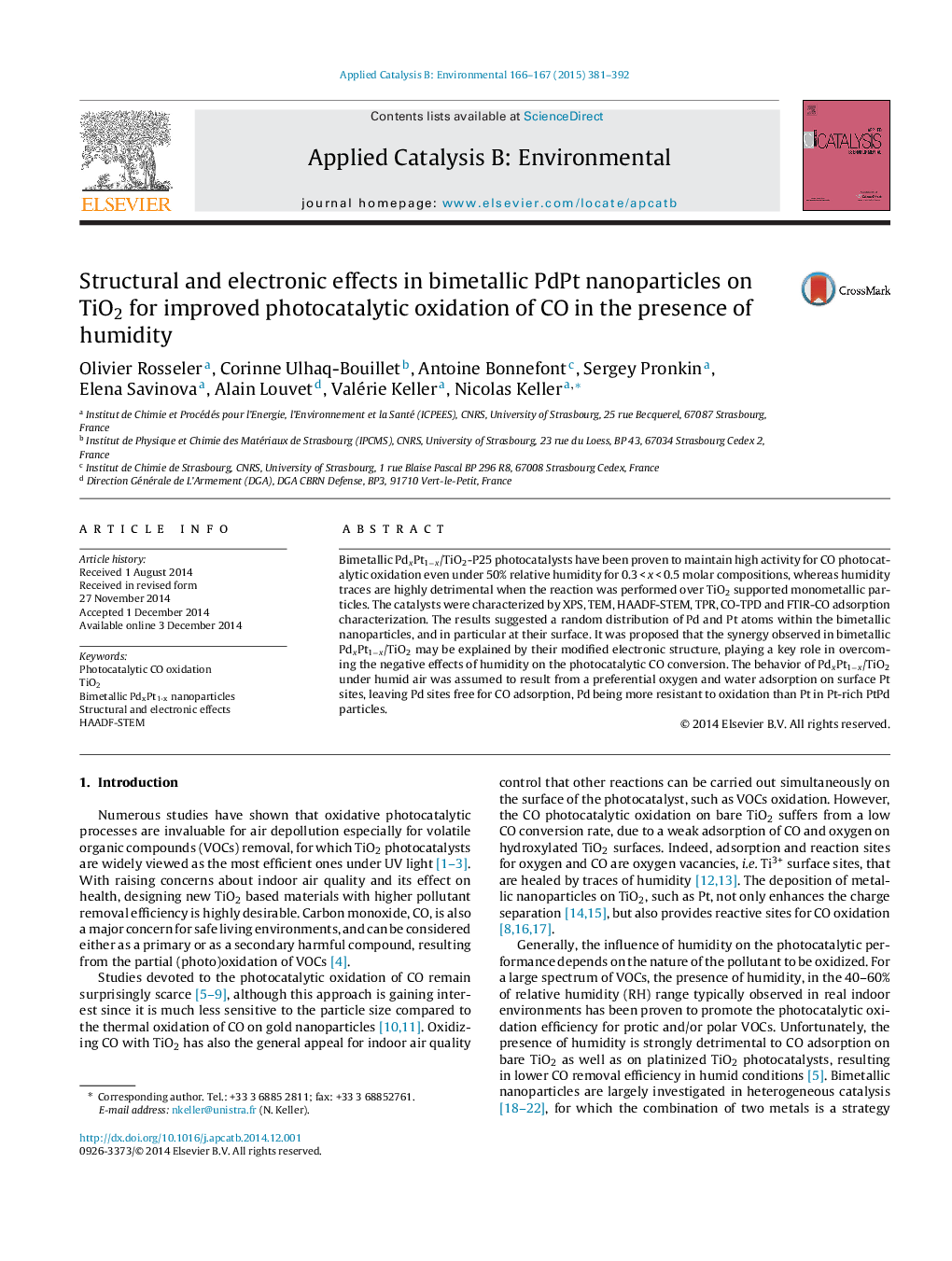| کد مقاله | کد نشریه | سال انتشار | مقاله انگلیسی | نسخه تمام متن |
|---|---|---|---|---|
| 45732 | 46421 | 2015 | 12 صفحه PDF | دانلود رایگان |

• PdxPt1−x/TiO2 photocatalysts were prepared by direct chemical reduction of salts on TiO2.
• Pt and Pd atoms were randomly distributed at the particle surface with no segregation.
• Photocatalysts with x = 0.5 do not loose activity in CO conversion under UV in presence of humidity.
• Structural and electronic effects in bimetallic PdPt nanoparticles were proposed.
Bimetallic PdxPt1−x/TiO2-P25 photocatalysts have been proven to maintain high activity for CO photocatalytic oxidation even under 50% relative humidity for 0.3 < x < 0.5 molar compositions, whereas humidity traces are highly detrimental when the reaction was performed over TiO2 supported monometallic particles. The catalysts were characterized by XPS, TEM, HAADF-STEM, TPR, CO-TPD and FTIR-CO adsorption characterization. The results suggested a random distribution of Pd and Pt atoms within the bimetallic nanoparticles, and in particular at their surface. It was proposed that the synergy observed in bimetallic PdxPt1−x/TiO2 may be explained by their modified electronic structure, playing a key role in overcoming the negative effects of humidity on the photocatalytic CO conversion. The behavior of PdxPt1−x/TiO2 under humid air was assumed to result from a preferential oxygen and water adsorption on surface Pt sites, leaving Pd sites free for CO adsorption, Pd being more resistant to oxidation than Pt in Pt-rich PtPd particles.
Figure optionsDownload as PowerPoint slide
Journal: Applied Catalysis B: Environmental - Volumes 166–167, May 2015, Pages 381–392